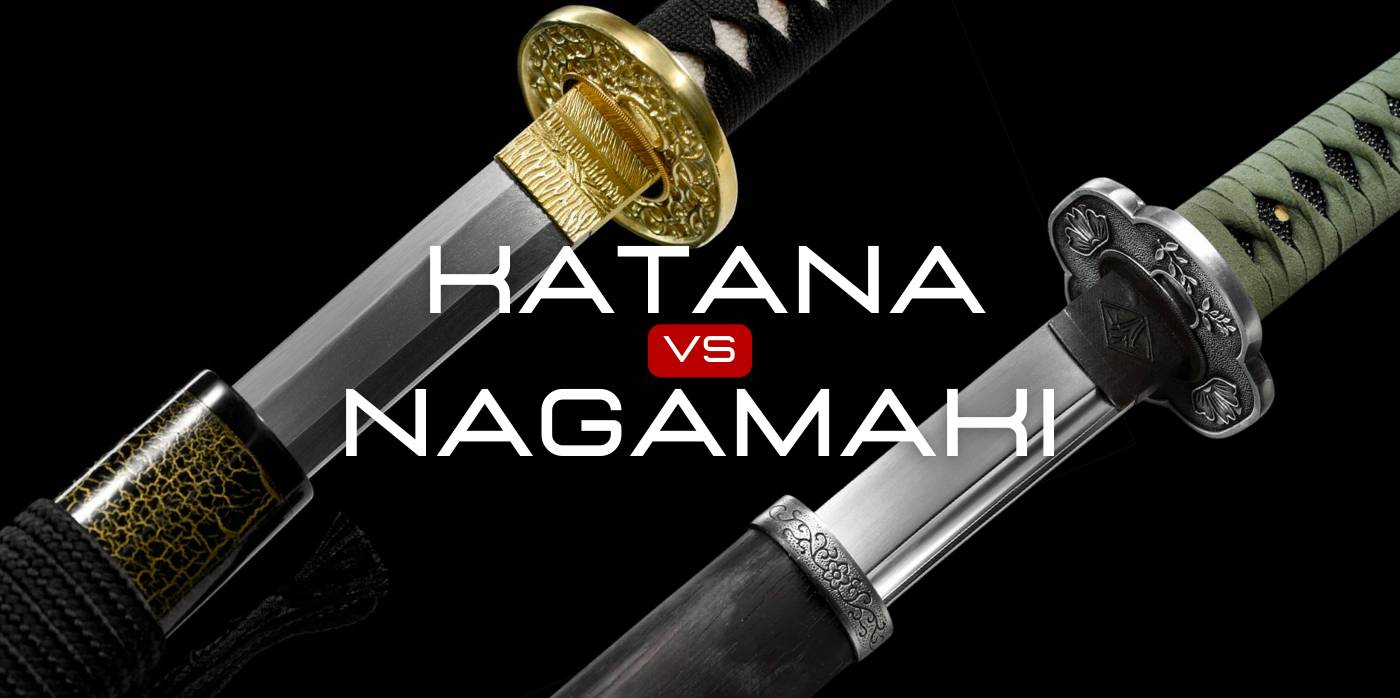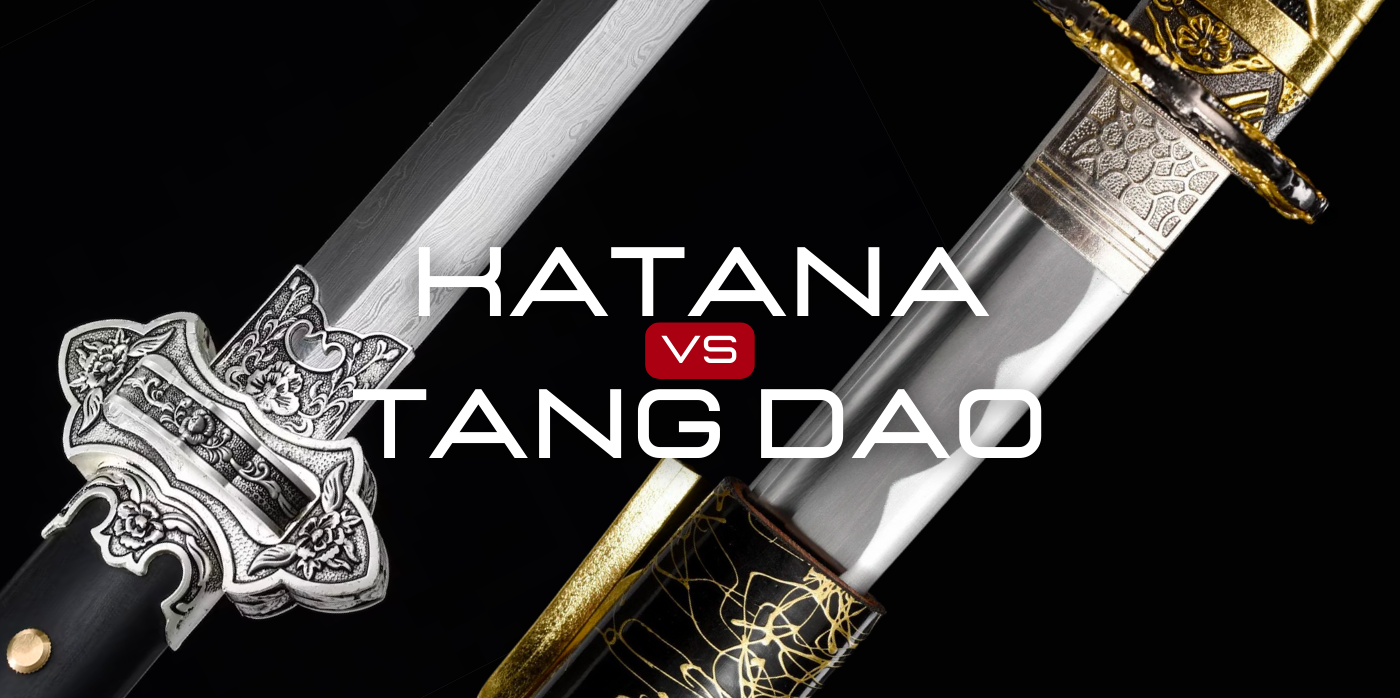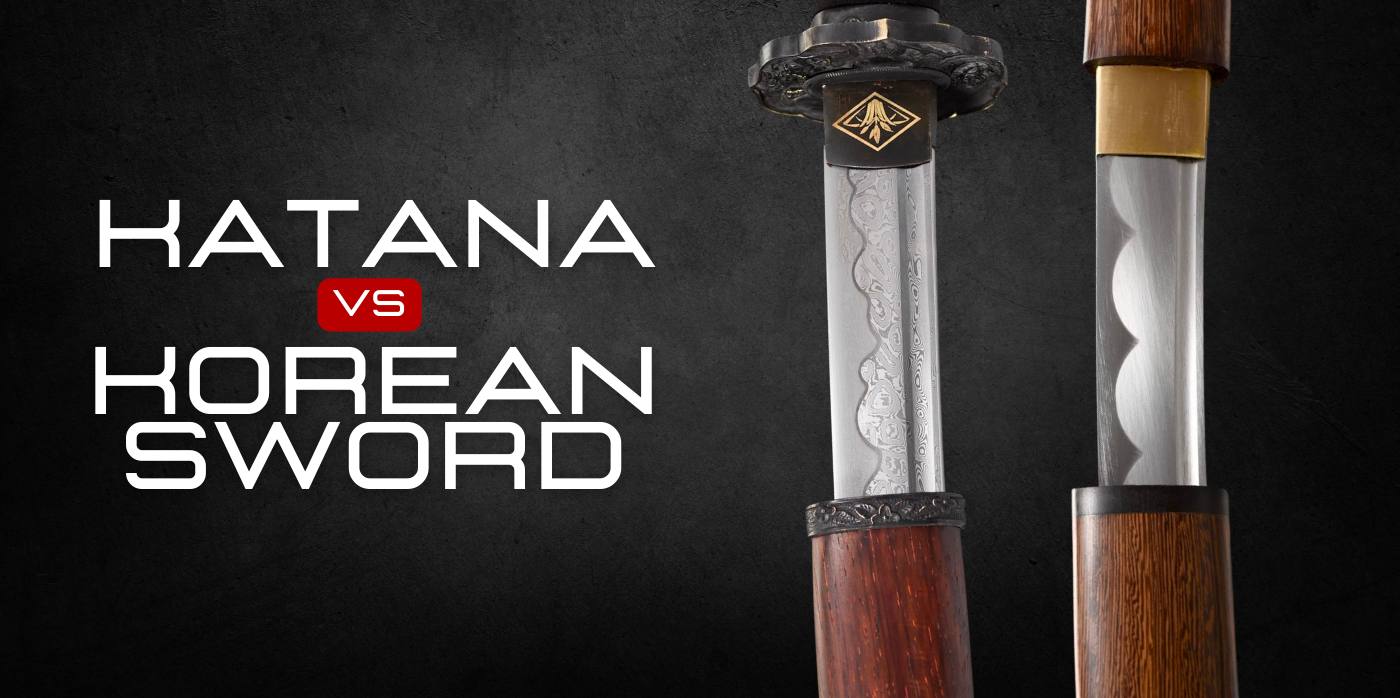What is a nagamaki
A Nagamaki (長巻) is a traditional Japanese weapon that features a unique design combining elements of both a sword and a polearm. Its name, translating to "long wrap" refers to the weapon's significant handle length, which is wrapped similarly to the hilt of a katana for better grip. The Nagamaki's design consists of a long curved blade similar in shape and construction to that of a katana, attached to an equally long handle. This structure allows for versatile combat techniques, offering the wielder the cutting power and technique of a sword with the reach of a longer weapon.
The Nagamaki dates back to the Heian period (794 to 1185) and saw significant use during the Kamakura period (1185–1333). It was a popular weapon among the samurai class, particularly for fighting against cavalry, as its long reach and cutting ability made it effective for dismounting horsemen. The balance and construction of the Nagamaki enable both slashing and thrusting attacks, making it a versatile weapon on the battlefield.
Historically, the Nagamaki's blade length could vary, but it typically matched the length of its handle, giving the weapon an overall balanced feel. This weapon is less commonly seen today but remains a subject of interest among martial arts practitioners who study traditional Japanese weapons, as well as collectors and historians fascinated by feudal Japan's military technology.
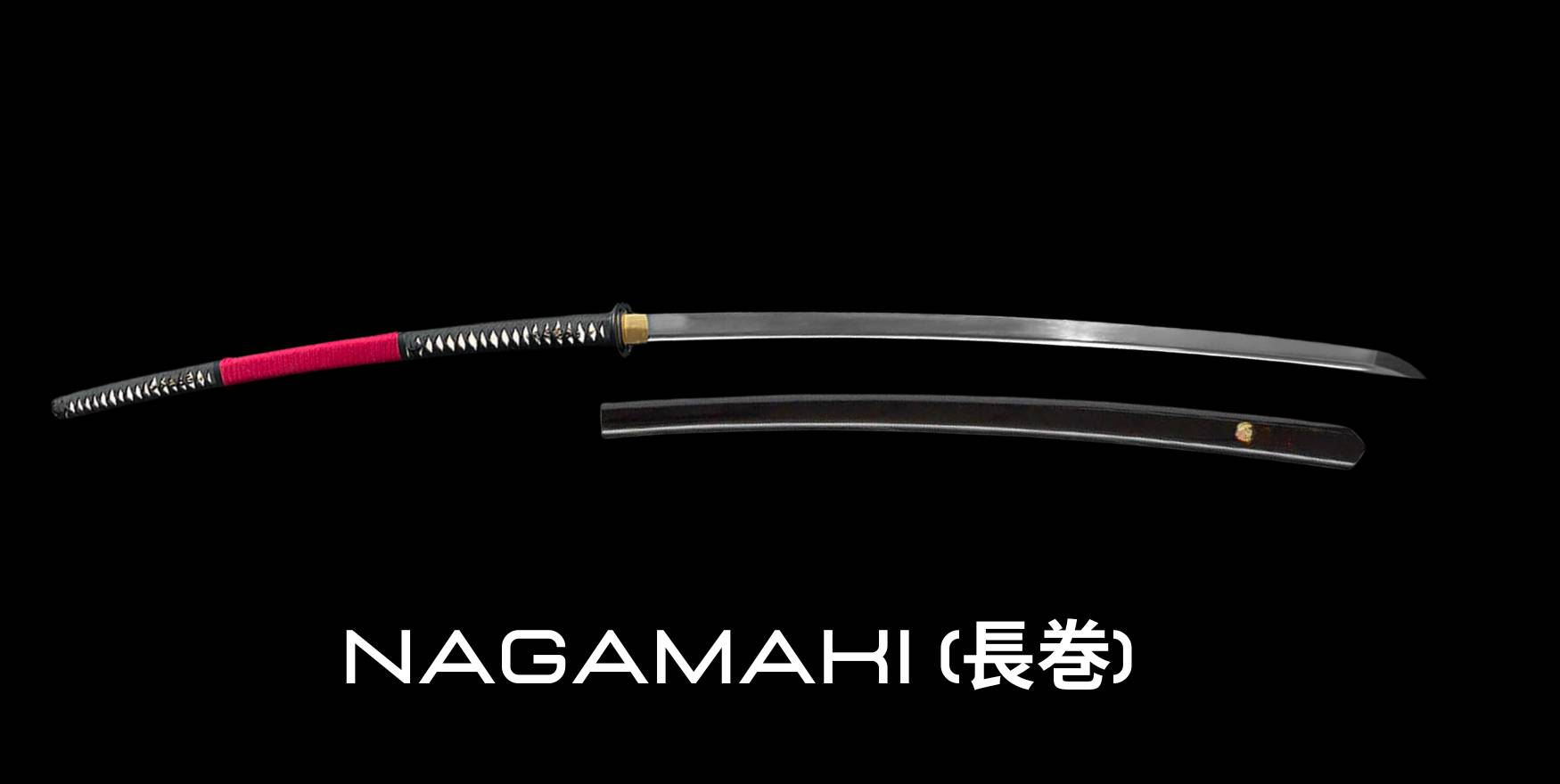
Nagamaki characteristics
Nagamaki Length
- Overall Length: The total length of a Nagamaki can vary significantly, but traditionally, it ranges between 120 to 240 centimeters (about 4 to 8 feet).
- Blade Length: The blade itself is usually about the same length as the handle, roughly between 60 to 90 centimeters (2 to 3 feet), although this can vary.
- Handle Length: The handle (nakago) is long, about the same length as the blade, providing the weapon its characteristic balance and versatility.
Nagamaki Shape
- Blade Shape: The blade of a Nagamaki is curved, resembling that of a katana but is longer and can sometimes be slightly more narrow. The curvature is designed for slicing or cutting, much like a katana.
- Handle: The handle is wrapped in a manner similar to traditional Japanese swords, offering a secure grip. It's designed for two-handed use, providing greater leverage and control when swinging the weapon.
Nagamaki materials
- Blade Construction: Like traditional Japanese swords, Nagamaki blades are crafted from tamahagane steel, folded and reforged multiple times to create a strong, sharp edge that is also flexible.
- Mounting (Koshirae): The Nagamaki's mounting includes a tsuba (guard) that is larger than that of a katana but smaller than that of a naginata, along with fittings (fuchi and kashira) on the handle. The handle itself is often wrapped in ray skin (samegawa) and then covered with a braided cord (ito) in intricate patterns.
Nagamaki Weight
The weight of a Nagamaki can vary depending on its dimensions and materials but generally ranges from 1 to 2 kilograms (2.2 to 4.4 pounds), making it heavier than a katana but designed for balance and maneuverability.
This combination of length, shape, and construction gave the Nagamaki a distinctive place in the arsenal of the samurai, making it a versatile weapon on the battlefield. Its unique balance of sword and polearm characteristics allowed for a wide range of combat techniques, from powerful slashing to more precise strikes and thrusts.

Nagamaki Use
The extended length of the Nagamaki allowed samurai to keep enemies at bay, providing a tactical advantage over opponents armed with shorter weapons. This reach was particularly effective against mounted opponents, as the wielder could strike from a distance where the enemy's swords or spears might fall short.
Nagamaki Vs Katana
Comparing the Nagamaki and the Katana offers insight into the diversity and specialization of Japanese bladed weapons, each designed for specific combat scenarios and reflecting different aspects of samurai martial culture.
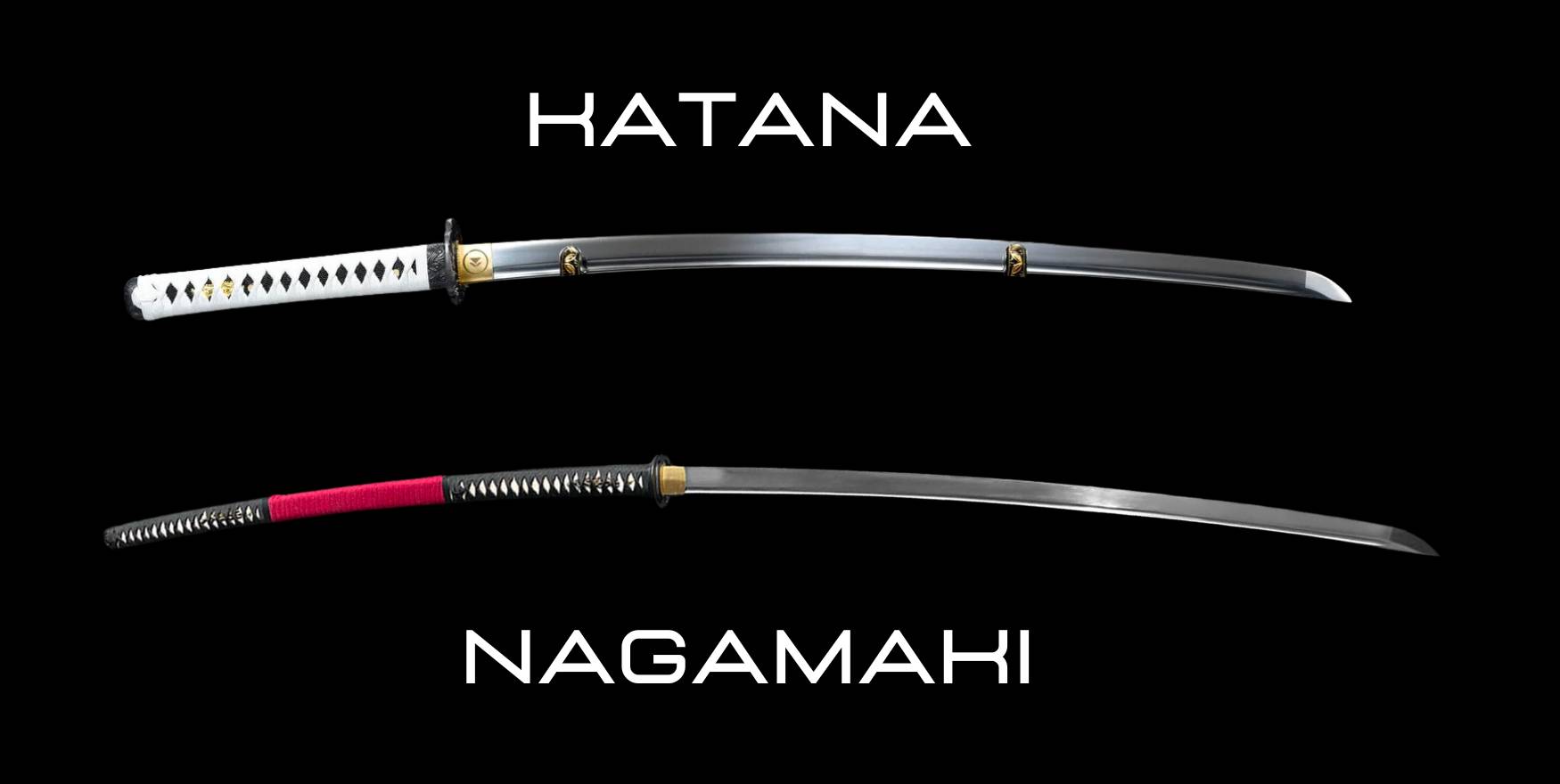
Here's a closer look at the distinctions between these two iconic weapons:
Blade Length and Design
- Katana: Features a curved, slender blade typically about 60 to 80 centimeters (24 to 31 inches) long. The katana is known for its sharpness and ability to deliver quick, precise cuts.
- Nagamaki: Boasts a longer blade, similar in length to the katana's but attached to an equally long handle, which could be as long as the blade itself. This design offers a balance between the cutting power of a katana and the reach of a polearm.
Handle (Tsuka)
- Katana: The handle is designed to be held with two hands, offering control and flexibility in various sword techniques.
- Nagamaki: Features a much longer handle, which provides leverage for powerful swings and the ability to engage opponents from a greater distance.
Weight and Balance
- Katana: Balanced towards the hilt to allow for quick, agile movements. The katana's design facilitates both cutting and thrusting techniques with speed and precision.
- Nagamaki: The longer handle of the Nagamaki shifts its balance point, making it feel more like a polearm. This balance supports sweeping cuts and allows the wielder to maintain distance from opponents.
Usage and Functionality
- Katana: Served as the samurai's primary sidearm, used for open combat and ceremonial purposes. It was a symbol of the samurai's soul and status.
- Nagamaki: Was more specialized, used in particular for combating mounted opponents and in situations where reach could provide a tactical advantage.
Other questions about the Nagamaki
Who forged the first nagamaki
The specific individual who forged the first nagamaki is not clearly documented in historical records. The nagamaki, like many traditional Japanese weapons, evolved over time, with its design being influenced by the changing needs of warfare and the personal preferences of its users. The creation and development of the nagamaki are believed to have occurred during the Heian period (794 to 1185), a time of significant military conflict and development in Japan.
The origins of the nagamaki are somewhat obscure, partly because it shares characteristics with other Japanese weapons like the tachi (a long sword) and the naginata (a polearm with a curved blade). It is thought that the nagamaki may have been developed as an adaptation of these weapons, combining the cutting power and technique of the sword with the reach and handling of the polearm.
As with many historical weapon developments, the first nagamaki were likely the result of continuous experimentation and adaptation by numerous blacksmiths, rather than the invention of a single individual. These craftsmen would have adapted existing forging techniques to meet the demands of samurai for a weapon that combined the best attributes of a long sword with the benefits of a pole weapon.
The evolution of Japanese swords and polearms was deeply connected to the needs of the battlefield, and many renowned swordsmiths of the time would have contributed to the development and refinement of the nagamaki. However, without specific historical documents attributing the creation of the first nagamaki to an individual smith, it remains a collective achievement of Japanese blacksmithing rather than the innovation of a single person.
What is the difference between nagamaki and Nodachi
The nagamaki and nodachi are both traditional Japanese weapons with distinct characteristics that set them apart. Understanding their differences requires examining their design, use, and historical context.\

Here's a closer look at each:
Nagamaki
- Design and Structure: The nagamaki is characterized by a long blade similar in length to that of a katana or a tachi, and it is coupled with an equally long handle. This long handle is wrapped in cord or silk in much the same way as the handle of a katana, providing a firm grip over a greater length. The blade and handle lengths can be quite similar, creating a balanced weapon that extends the wielder's reach.
- Use and Functionality: The nagamaki was primarily used for slicing, with its design facilitating powerful, sweeping cuts. The extended handle offered leverage that allowed for the application of greater force in strikes, making it effective against both infantry and cavalry.
- Historical Context: The nagamaki saw use during the feudal period of Japan, particularly in the 14th and 15th centuries. It was a weapon favored for its ability to combat mounted opponents effectively.
Nodachi (Ōdachi)
- Design and Structure: The nodachi, or ōdachi, is a very large two-handed sword with a significantly longer blade than the katana. The length of a nodachi's blade can exceed one meter (3.3 feet), and when including the handle, the overall length of the weapon makes it more comparable to a polearm than to a sword. The nodachi's size and weight necessitate the use of both hands to wield effectively.
- Use and Functionality: Due to its size, the nodachi was used primarily as a battlefield weapon, capable of cutting down enemy foot soldiers and cavalry alike. Its length allowed for reach and cutting power unmatched by shorter swords, but its size also made it impractical for close-quarters combat or for use in confined spaces.
- Historical Context: The nodachi was used from the late Kamakura period (1185–1333) onwards but saw decreased practical use as combat techniques and weaponry evolved. It continued to have ceremonial and symbolic significance, and its impressive size made it a status symbol on the battlefield.
Key Differences
- Length and Balance: The primary difference lies in the length of the blade and the balance of the weapon. The nodachi has a much longer blade and overall length than the nagamaki, making it more cumbersome and requiring more space to wield effectively.
- Handling: While both weapons are two-handed, the nagamaki's design—with its long handle and relatively balanced weight distribution—allows for a degree of maneuverability and control that the longer, heavier nodachi lacks.
- Practical Use: The nagamaki could be used more flexibly in different combat scenarios, including infantry skirmishes, whereas the nodachi was more specialized, often drawn before battle as a means of intimidating the enemy due to its size and the physical prowess required to wield it.
How effective is a nagamaki
Historical records and accounts suggest that the nagamaki was prized for its effectiveness in battle. It was particularly noted for its ability to combat mounted warriors, as its reach and cutting ability could be used to target the legs of horses, unseating the rider.
However, like all weapons, the effectiveness of the nagamaki would also depend on the skill of the wielder. Mastery of the nagamaki, like any traditional Japanese weapon, required extensive training and practice. Samurai who specialized in its use would have been formidable opponents on the battlefield.
Balance and Control
The nagamaki’s design, with a handle almost as long as its blade, offers a unique balance that allows for both precision and control in swinging and striking. This balance makes it easier to wield and maneuver, despite its size.
Versatility in Combat
The length of the nagamaki's handle, which could be gripped with both hands, allowed for a versatile range of combat techniques, including slicing, chopping, and thrusting motions. This versatility made it effective against a variety of opponents, including both foot soldiers and cavalry.
Reach and Impact
The extended reach provided by the nagamaki's long blade and handle made it an excellent weapon for engaging enemies at a distance. This reach, combined with the weapon's substantial weight and momentum, allowed for powerful strikes that could penetrate armor or dismount cavalry.
Defensive Capabilities
The length and maneuverability of the nagamaki also offered defensive advantages, allowing the wielder to keep opponents at bay and block or deflect incoming attacks with the weapon itself.
Psychological Impact
The impressive size and distinctive appearance of the nagamaki could have a psychological impact on opponents, potentially intimidating them before the physical combat even began.



